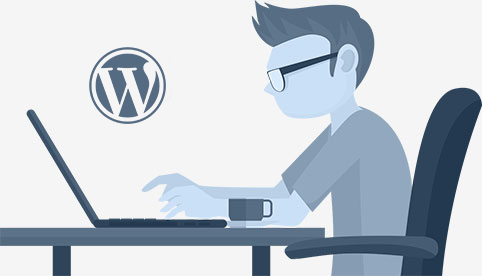Introduction
WordPress is a widely used content management system (CMS) that powers millions of websites worldwide. However, its popularity also makes it a prime target for hackers and malicious attacks. Therefore, implementing robust security measures is essential to protect your WordPress website from potential threats.
In this article, we will explore effective security practices and techniques to safeguard your WordPress site. We will also discuss the role of premium WordPress themes in enhancing the security of your website.
Choosing a Secure Hosting Provider
Importance of a Reliable Hosting
Selecting a reputable hosting provider is the first step towards ensuring the security of your WordPress website. A secure hosting environment with regular backups, firewalls, and intrusion detection systems can significantly reduce the risk of unauthorized access and data breaches.
Features to Look for in a Hosting
When choosing a hosting provider, consider features such as SSL certificates, secure FTP (SFTP) access, automatic backups, and robust server-level security measures. Look for hosting providers that offer proactive monitoring, malware scanning, and quick response times to potential security threats.
Regular Update of Themes and Plugins
Importance of Regular Updates
Keeping your WordPress core, themes, and plugins up to date is crucial for maintaining a secure website. Updates often include security patches and bug fixes that address vulnerabilities discovered by developers or reported by the WordPress community.
Enabling Automatic Updates
To streamline the update process, enable automatic updates for your WordPress core, themes, and plugins. Premium WordPress themes often come with built-in update functionality, allowing you to easily keep your website secure and up to date.
Strong User Authentication
Secure Usernames and Passwords
Use strong and unique usernames and passwords for all user accounts associated with your WordPress website. Avoid using default usernames such as “admin” and choose complex passwords that include a combination of letters, numbers, and special characters.
Two-Factor Authentication
Two-Factor Authentication adds an extra layer of security to your WordPress login process. It requires users to provide a second verification, such as a code sent to their mobile device, in addition to their username and password. Several plugins are available to implement 2FA on your WordPress website.
Protecting Against Malware and Brute Force Attacks
Installing a WordPress Security Plugin
WordPress security plugins offer a range of features to protect your website from malware and brute force attacks. These plugins can scan for malicious code, monitor file changes, and provide firewall protection.
Limiting Login Attempts
To prevent brute force attacks, limit the number of login attempts allowed on your WordPress login page. Several security plugins offer features to implement login attempt restrictions and lockout periods for failed login attempts.
Securing Your WordPress Database
Changing the Default Database Prefix
By default, WordPress uses the prefix “wp_” for its database tables. Changing this default prefix adds an extra layer of security to your WordPress database. Use a plugin or manually modify the table prefixes during the WordPress installation process.
Regular Database Backups
Regularly backing up your WordPress database is essential for recovering your website in case of a security incident or data loss. Use backup plugins or your hosting provider’s backup services to schedule automated backups.
Protecting Your WordPress Login Page
Customizing Your Login Page URL
Changing the default login page URL from “/wp-login.php” to something unique can help protect against brute force attacks and unauthorized access attempts. Use security plugins to implement custom login page URLs easily.
Implementing CAPTCHA or reCAPTCHA:
Adding CAPTCHA or reCAPTCHA to your WordPress login page can deter automated bots from attempting to gain access to your website.
Hiding Error Messages:
By default, WordPress displays error messages that provide hints to potential attackers during failed login attempts. Disable or hide these error messages to prevent revealing any sensitive information about your website’s login process.
Securing File Permissions
Setting Correct File Permissions
Ensure that file permissions for your WordPress installation and its directories are set correctly. Restrict write permissions on files and directories that do not require them, reducing the risk of unauthorized modifications or uploads.
Implementing a Web Application Firewall (WAF)
The Role of a WAF
A Web Application Firewall (WAF) acts as a barrier between your website and potential threats. It filters incoming traffic and blocks malicious requests, protecting your WordPress website from common attacks such as SQL injections and cross-site scripting (XSS) attacks.
Utilizing WAF Plugins or Services
Several WordPress security plugins offer WAF functionality that can be easily integrated into your website. Alternatively, consider using a third-party WAF service that specializes in protecting WordPress websites.
Performing Security Audits
Regularly audit your WordPress website’s security by conducting vulnerability scans and penetration tests. These audits can help identify potential weaknesses or vulnerabilities that need to be addressed.
Monitoring Website Activity
Monitor your website’s activity for any suspicious behavior, such as multiple failed login attempts, unusual file modifications, or unexpected traffic patterns. Security plugins can provide real-time alerts and notifications for such activities.
The Role of Premium WordPress Themes in Security
Reliable Code Quality
Premium WordPress themes are often developed with a focus on code quality and security. They undergo rigorous testing and adhere to best coding practices, reducing the likelihood of vulnerabilities in the theme’s codebase.
Regular Theme Updates
Premium themes typically come with dedicated support and regular updates from the theme developers. These updates often include security patches and improvements, ensuring that your website remains secure.
Additional Security Features
Many premium WordPress themes offer additional security features such as built-in firewalls, enhanced login page protection, and advanced access control options. These features can further enhance the security of your WordPress website.
Conclusion
Securing your WordPress website is crucial to protect your data, maintain the trust of your visitors, and prevent potential disruptions. By implementing the security measures discussed in this article you can significantly enhance the security of your WordPress website.
Remember that security is an ongoing process, and regular monitoring and updates are essential to stay ahead of emerging threats and vulnerabilities.



